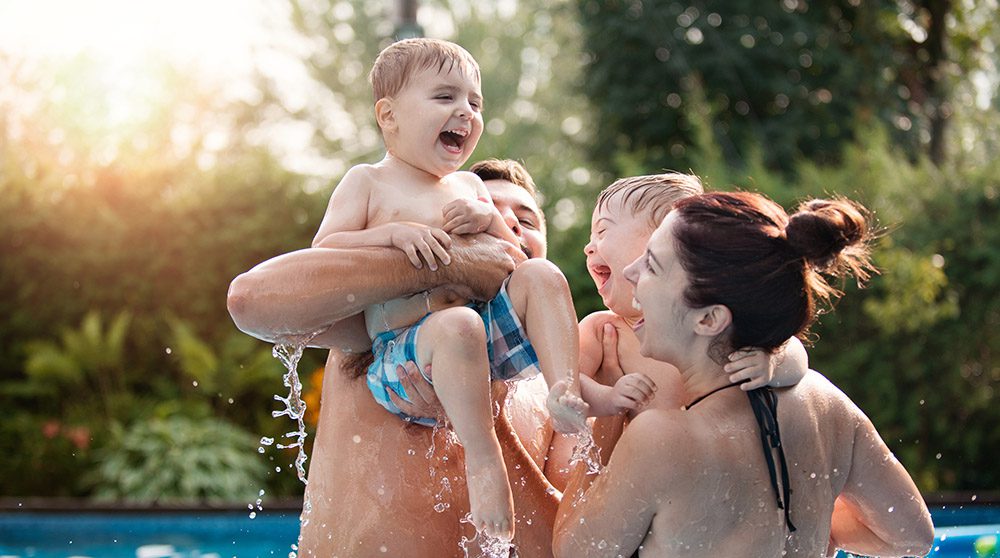15 pool safety tips for summer.

From cannon balls to belly flops, splash wars to sunbathing, days by the pool are meant to be fun and stress-free. And with a few safety precautions, they will be.
As you prepare your pool to be the staple of the summer, keep these 15 pool safety tips top of mind:
Sign up for swim lessons. Do your kids know how to swim? Do you need a refresher course? If family members need help learning, see which organizations are offering instructional courses and start lessons before pool season begins.
Get certified in CPR. At least one person in every household should be trained to do this life-saving technique. Because for every minute without it, a person’s chance of survival decreases by 10 percent. Refresh your memory of the CPR guidelines and sign up for training.
Fill your first-aid kit. Pools come with plenty of fun, but they can come with accidents, too. Make sure to have a first-aid kit handy that’s fully stocked. Not sure where to start? See the 31 items you should include in your first-aid kit.
Invest in rescue equipment. Every pool should have a high-quality life preserver nearby in case it needs to be quickly accessed and used.
Keep kids within arm’s reach. No child should ever be left unattended around water. Even when your kids are old enough to be in the water alone or are trained swimmers, they should still be supervised. Keep your eyes on the pool and all swimmers within reach.
Establish rules for your pool. Taking precautions around your pool could make all the difference. Enforce a no-running rule, a rule for staying out of the water until an adult is present, rules for not swimming in bad weather, and more.
Discourage diving. Pools can vary in depth, and amateur diving can be dangerous. It’s safest to encourage feet-first entry into any pool rather than diving headfirst.
Walk, don’t run. On a slippery surface, running often leads to falling.
Stay away from the drain. A drain’s suction is stronger than you think. If it gets hold of hair, jewelry, or a bathing suit, it can trap someone underwater. For this reason, we recommend keeping a pair of scissors easily accessible to adults, but out of reach of children.
Don’t swim in a storm. Did you know water conducts electricity? It’s what makes swimming and lightning such a dangerous combination. Keep your eye on the weather, and when you see/hear a storm, head back inside.
Fence it in. Add a fence that completely encloses your pool, especially for in-ground pools. It should be at least four feet high. In addition, add a gate that closes and locks on its own.
Remove steps and ladders. Have an above-ground pool? Make sure a child can’t climb into it when they’re not supposed to by removing steps and ladders (and keeping them out of reach) when it’s not swimming time. For added safety, add a deck with a gate that closes and locks on its own.
Keep it covered. When your pool’s not in use, it should be securely covered to stop accidental falls or drowning.
Stick to a maintenance schedule. Reduce the risk of earaches and rashes by testing and adjusting your pool’s chemical levels on a regular basis.
Safely store your pool chemicals. Keep them in a cool, dry spot, away from sunlight. They should also be out of reach of any children or pets.
Our 15 pool safety tips will protect your loved ones as they splash all season. For more information about pool coverage included in a homeowners policy, talk to a local, independent agent. An agent may suggest an umbrella policy to increase your liability protection and for added peace of mind.







